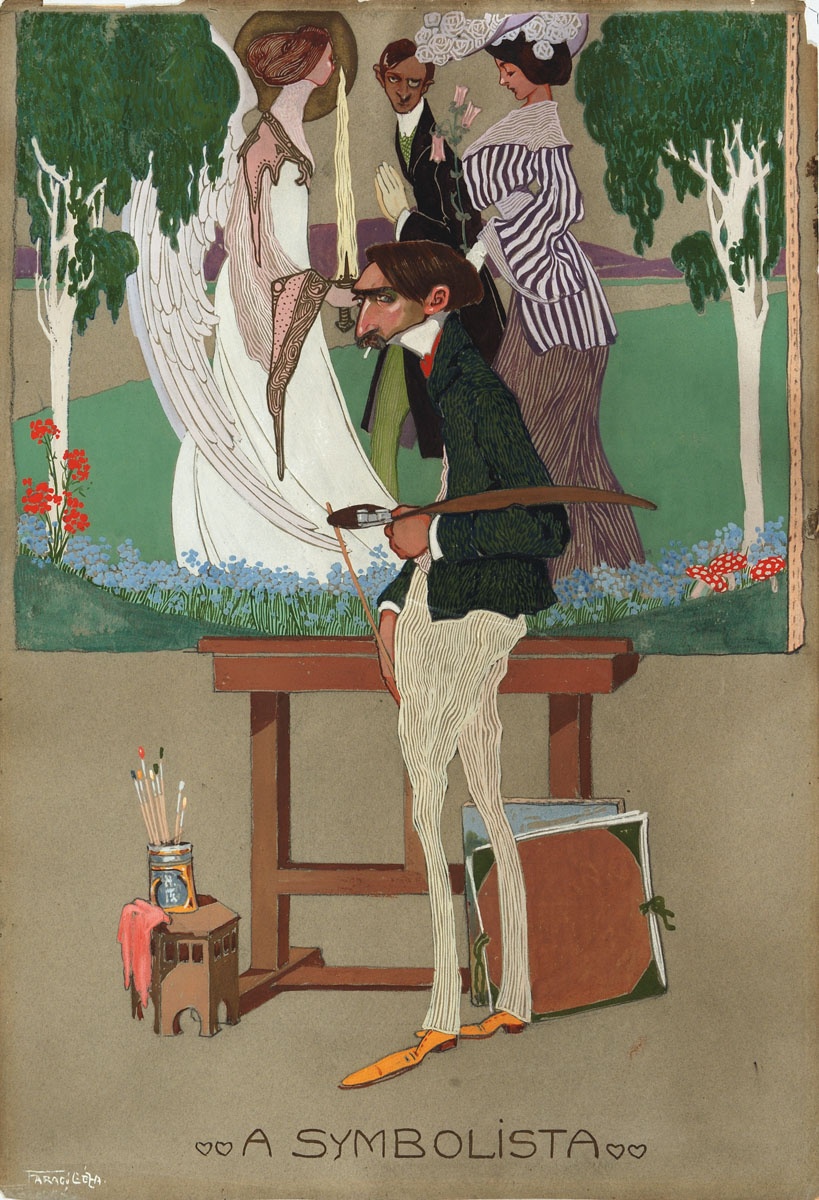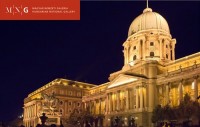Géza Faragó, a famous poster artist of the 1900s and 1910s, was a socialite in the world of theatres and night clubs around Budapest’s Nagymező Street, the embodiment of the “bohemian artist”. His characteristic sarcasm is also reflected in his drawings, while his self-irony was well-known. The ugly, bird-headed figure, the glowing-eyed dandy in his composition The Symbolist is actually himself. The painting is a parody of the biblical theme of expulsion from Paradise, where Adam is a pious man of the world wearing yellow gloves, Eve is a flirtatious lady and the archangel has an embroidered gown in Art Nouveau style. Instead of the expulsion, the scene rather recalls a wedding ceremony. The use of a “picture within the picture” is not simply self-parody, but provides a means of composing an honest artistic credo showing self-recognition. Instead of a “great symbolist composition”, a narrative image rich with humour and decorative details has been rendered.
en

